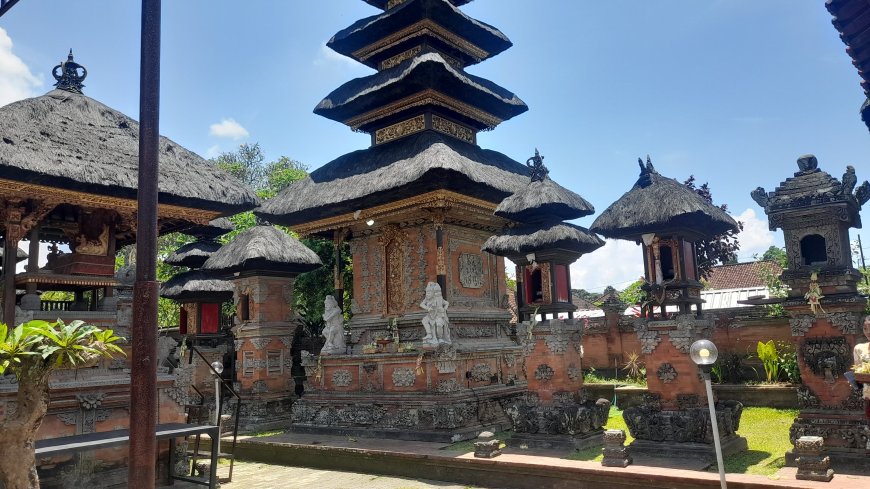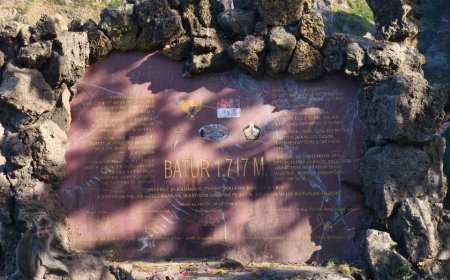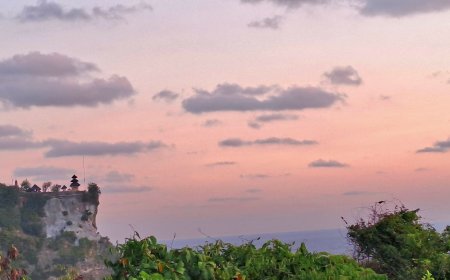Pura Dalem Pande Tusan: The Heritage of the Oldest Pande Temple in Bali, the Payogan of Empu Siwa Saguna
Pura Dalem Pande Tusan is the oldest Pande temple in Bali, rich in historical and cultural value. Located in a serene area, this temple features beautiful architecture and a spiritual atmosphere. The Payogan of Empu Siwa Saguna within it reflects the traditional craftsmanship of Balinese pande. This temple serves not only as a place of worship but also as a center for cultural heritage preservation.

Pura Dalem Pande Tusan, located in Kajakauh Hamlet, Tusan Village, Banjarangkan Subdistrict, Klungkung Regency, is a significant site in Bali's history and culture. Facing west and situated approximately 7 km from Klungkung City center, this temple serves not only as a place of worship but also holds historical and philosophical value, closely tied to the cultural development and ancestral lineage of Bali, particularly for the Pande clan. This temple is believed to be the oldest Pande temple in Bali and is deeply connected to Mpu Siwa Saguna. It was initially built by Mpu Siwa Saguna and is considered to predate both Pura Dalem Gandamayu and Penataran Pande in Besakih. Within the temple, there are sacred structures dedicated to the main deities of Hinduism. The term "Pande" here refers to descendants or clan members whose ancestors practiced memande, or metalworking. This profession included creating various tools from bronze (such as gongs and religious items), iron (hoes, knives, spears, keris, and more), as well as gold and silver (jewelry, religious items), known as anggtandring and angaluh. Metalworking (memande) is a profession that has been highly valued across all levels of society, and alongside trade, it has been a core occupation for the Pande lineage since ancient times.

Jeroan Dalem Pande Tusan Temple (Photo Source: Author’s Collection)
The History of Pura Dalem Pande Tusan
According to Babad Pande (Pande Chronicles), two brothers, Mpu Gandring and Mpu Siwa Saguna, are central figures in this lore. Mpu Gandring is known in Java as a legendary keris maker during the Singosari and Kediri Kingdoms, while Mpu Siwa Saguna is a prominent figure in Bali, endowed with spiritual powers. One famous story recounts how he plunged a keris into the ground, turning an unpleasant smell into a fragrant aroma. This location is now known as Gandamayu Attaubah Wangi and is regarded as the origin of the Kawitan (ancestral shrine) for the Pande community in Bali.
The history of Pura Dalem Pande Tusan is also intertwined with the Majapahit expedition to Bali, led by Gajah Mada and Arya Damar. After Bali was conquered, the Majapahit forces temporarily resided in Tusan. The village of Tusan subsequently played a critical role for the Krisna Kepakisan Dynasty as a base for preparing materials for the construction and restoration of Besakih Temple. During their stay, Arya Kenceng and his followers prepared various components, including the Meru with nine roofs, small granaries, and ceremonial structures to be erected at Besakih Temple. As well as being historically significant to the expedition, Tusan became a key symbol in Bali’s social and cultural structure, especially regarding the dedication of ancestors towards Bali’s spiritual growth and development.

Pesamuan Dalem Pande Tusan Temple (Photo Source: Author’s Collection)
The Pujawali ceremony at Pura Dalem Pande Tusan is held on Saturday Kliwon Wuku Landep, or Tumpek Landep, as a means to honor Lord Shiva in his manifestation as Sang Hyang Pasupati, who imbues life into all creations in the world, as noted in lontar Sundarigama. Landep, stemming from Tumpek Landep, symbolizes the sharpening of citta, buddhi, and manah (mind). Thus, Tumpek Landep marks a time for self-reflection and character refinement, promoting clear thinking and conduct aligned with religious values and teachings. Pura Dalem Pande Tusan also plays a strategic role as one of the shrines connected to Pura Agung Kentel Gumi, particularly during grand ceremonies such as Piodalan and Ngusaba, which are also held at Balai Piasan Murddha Manik or Piasan Wawu Rawuh. Through the Tri Hita Karana philosophy, Pura Dalem Pande Tusan represents a balance between humans, nature, and God, serving as a means for worshippers to strengthen their connection with ancestors believed to bestow blessings and protection.

Perapen Dalem Pande Tusan Temple (Photo Source: Author’s Collection)
The Sacredness of Perapen
Inside Pura Dalem Pande Tusan, there is a Perapen, a special structure where metals such as keris and gamelan are forged. The Perapen is seen not only as a workspace but also as a sacred area containing a shrine to honor Dewa Brahma. Due to its sanctity, women undergoing menstruation are not permitted to enter the Perapen area, and all tools taken outside must be purified again with prayascita offerings. Etymologically, "perapen" derives from the word "api" (fire), which phonetically evolved to "perapen." Over time, the Perapen’s function has adapted; once limited to being built in the southern courtyard, it is now constructed according to the layout of the Pande’s residence.
Pura Dalem Pande Tusan stands as more than just a historical site—it symbolizes a spiritual unity linking the past with the present. With its profound significance and unique features, this temple remains a testament to Bali’s enduring cultural and spiritual heritage, inspiring future generations.
































































